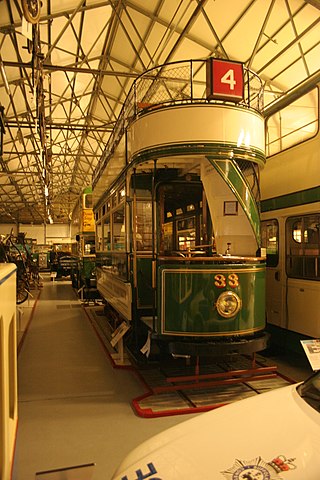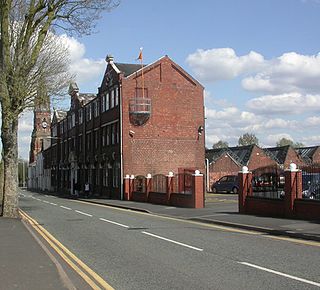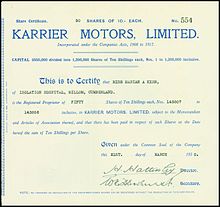Dodge is an American brand of automobiles and a division of Stellantis North America, based in Auburn Hills, Michigan. Dodge vehicles have historically included performance cars, and for much of its existence Dodge was Chrysler's mid-priced brand above Plymouth.

The Rootes Group or Rootes Motors Limited was a British automobile manufacturer and, separately, a major motor distributors and dealers business. Run from London's West End, the manufacturer was based in the Midlands and the distribution and dealers business in the south of England. In the decade beginning 1928 the Rootes brothers, William and Reginald, made prosperous by their very successful distribution and servicing business, were keen to enter manufacturing for closer control of the products they were selling. One brother has been termed the power unit, the other the steering and braking system.

Commer was a British manufacturer of commercial and military vehicles from 1905 until 1979. Commer vehicles included car-derived vans, light vans, medium to heavy commercial trucks, and buses. The company also designed and built some of its own diesel engines for its heavy commercial vehicles.

Renault Trucks is a French commercial truck manufacturer with corporate headquarters at Saint-Priest near Lyon. Originally part of Renault, it has been a subsidiary of the Volvo Group since 2001.

The Chrysler flathead engine is a flathead automotive engine manufactured by the Chrysler Corporation from 1924 through the early 1960s. The flathead engine came in four-,six-, and eight-cylinder configurations and varying displacement, with both a cast iron and cast aluminum cylinder head. It was installed in Chrysler, DeSoto, Dodge and Plymouth branded vehicles.

Sunbeam Motor Car Company Limited was a British automobile manufacturer in operation between 1905 and 1934. Its works were at Moorfields in Blakenhall, a suburb of Wolverhampton in Staffordshire, now West Midlands. The Sunbeam name had originally been registered by John Marston in 1888 for his bicycle manufacturing business. Sunbeam motor car manufacture began in 1901. The motor business was sold to a newly incorporated Sunbeam Motor Car Company Limited in 1905 to separate it from Marston's pedal bicycle business; Sunbeam motorcycles were not made until 1912.

Chrysler Europe was the American automotive company Chrysler's operations in Europe from 1967 through 1978. It was formed from the merger of the French Simca, British Rootes and Spanish Barreiros companies. In 1978, Chrysler divested these operations to PSA Peugeot Citroën.
Scammell Lorries Limited was a British manufacturer of trucks, particularly specialist and military off-highway vehicles, between 1921 and 1988. From 1955 Scammell was part of Leyland Motors.

The Vulcan Motor and Engineering Company Limited, of Southport, England, made cars from 1902 until 1928 and commercial vehicles from 1914 until 1953.

Guy Motors was a Wolverhampton-based vehicle manufacturer that produced cars, lorries, buses and trolleybuses. The company was founded by Sydney S. Guy (1885–1971) who was born in Kings Heath, Birmingham. Guy Motors operated out of its Fallings Park factory from 1914 to 1982, playing an important role in the development of the British motor industry.

The Dodge 50 Series, later known as the Renault 50 Series, were light commercial vehicles produced in the UK by Chrysler Europe and later Renault Véhicules Industriels between 1979 and 1993 as a replacement for the earlier Dodge Walk-Thru stepvan and smaller Dodge Spacevan cab-over van. The Dodge 50 series utilized the same cab as the American Dodge B series vans, however in a modified state catered for European regulations. The chassis however was British-designed and had no parts shared with the American van, being significantly bigger.

The Ipswich Transport Museum is a museum in Ipswich, Suffolk, England, devoted principally to the history of transport and engineering objects made or used in its local area.

Canadian Military Pattern (CMP) trucks were mutually coherent ranges of military trucks, made in large numbers, in several classes and numerous versions, by Canada's branches of the U.S. 'Big Three' auto-makers during World War II, compliant to British Army specifications, primarily intended for use in the armies of the British Commonwealth allies, but also serving in other units of the British Empire.

The Scammell Scarab is a British 3-wheeled tractor unit produced by the truck manufacturer Scammell between 1948 and 1967. These vehicles are often known as "Snub-nose Trucks" or "Snub-nose Lorries" because of the round hood in front of the cab.

The Dodge WC series is a prolific range of light 4WD and medium 6WD military utility trucks, produced by Chrysler under the Dodge and Fargo marques during World War II. Together with the 1⁄4-ton jeeps produced by Willys and Ford, the Dodge 1⁄2‑ton G-505 and 3⁄4‑ton G-502 trucks made up nearly all of the light 4WD trucks supplied to the U.S. military in WWII – with Dodge contributing some 337,500 4WD units.

The Doncaster trolleybus system once served the town of Doncaster, South Yorkshire, England. Opened on 22 August 1928, it gradually replaced the Doncaster Corporation Tramways. By the standards of the various now-defunct trolleybus systems in the United Kingdom, the Doncaster system was a moderately sized one, with a total of 6 routes, all radiating out from the town centre, and a maximum fleet of 47 trolleybuses. The Bentley route was the first to close, on 12 February 1956, and the Beckett Road route was the last to go, on 14 December 1963.

A coupé utility is a vehicle with a passenger compartment at the front and an integrated cargo tray at the rear, with the front of the cargo bed doubling as the rear of the passenger compartment.

Sunbeam Commercial Vehicles was a commercial vehicle manufacturing offshoot of the Wolverhampton based Sunbeam Motor Car Company when it was a subsidiary of S T D Motors Limited. Sunbeam had always made ambulances on modified Sunbeam car chassis. S T D Motors chose to enter the large commercial vehicle market in the late 1920s, and once established they made petrol and diesel buses and electrically powered trolleybuses and milk floats. Commercial Vehicles became a separate department of Sunbeam in 1931.

Thames was a commercial vehicle brand produced by Ford of Britain.
In 1900 the War Office formed a Mechanical Transport Committee looking to develop the use of mechanical transport as a way to move troops, equipment and supplies. A subsidy scheme - also known as a subvention scheme - was devised where approved vehicles bought by civilian owners would be granted a subsidy in exchange for the vehicles being made available in time of war. While the financial details of the scheme were complex and changed over time, the trials and their results both improved the vehicles and engines available for heavy transport, and had an important influence on the vehicles and engines that were made and used during WW1.

























